Before smartphones and social media consumed our attention, we connected in simpler, more personal ways. The 1970s were a special time when certain daily rituals brought families, friends, and even strangers together in ways that seem almost magical by today’s standards. These shared experiences formed the backdrop of our lives, creating moments of connection that many of us still cherish decades later.
1. Gathering Around the TV for Prime Time Shows
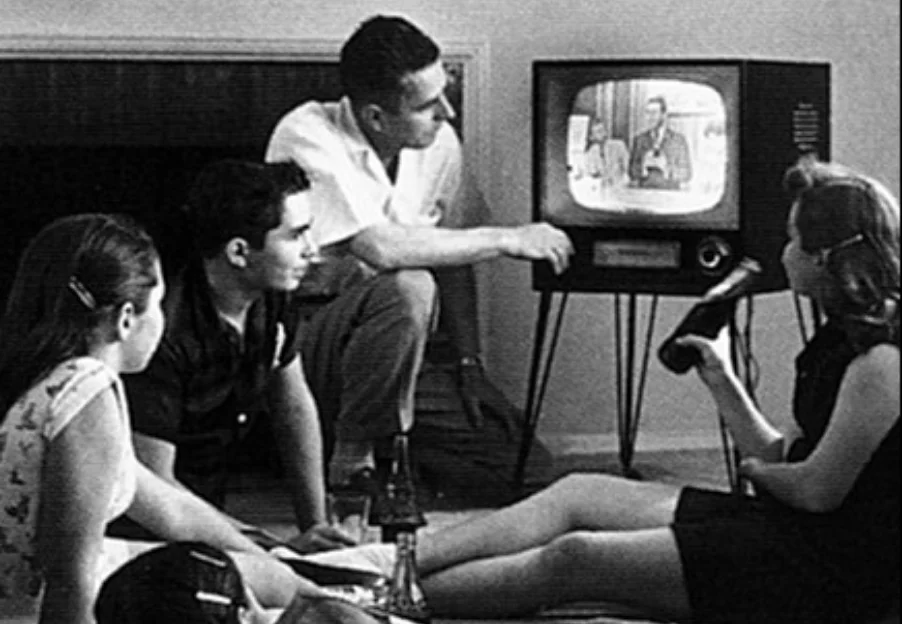
In the ’70s, watching television wasn’t the solitary, on-demand experience it is today—it was an event the whole family planned their evenings around. Everyone knew that shows like “All in the Family,” “MAS*H,” or “The Mary Tyler Moore Show” were appointment viewing, with living rooms across America filled with families sitting together at the exact same time. The next day, these shared viewing experiences became the centerpiece of conversations at work, school, and over backyard fences, creating a genuine cultural common ground. Britannica explores the history of television in the United States and the prime air times each show coveted.
Water cooler discussions would inevitably turn to the previous night’s episode, with phrases like “Did you see what Archie Bunker said?” connecting complete strangers in offices nationwide. The three-network universe meant that a staggering percentage of Americans witnessed the same cultural moments simultaneously, something almost unimaginable in today’s fragmented media landscape. These collective viewing experiences created a shared vocabulary and reference point that united people across geographic, economic, and social dividing lines.
2. Waiting for the Evening Newspaper

Every afternoon across neighborhoods in America, the satisfying thump of the evening paper hitting the front porch signaled an important daily ritual. Families would divvy up sections of the newspaper—Dad might claim the front page and sports, Mom took the lifestyle section, while kids fought over the comics or entertainment pages. The physical act of sharing and passing sections created natural conversation opportunities as family members would comment on interesting stories or read funny headlines aloud. The Times suggests that print media may be trying for a comeback in earnest in recent years.
Newspaper delivery itself was a community-building profession, with paperboys (and sometimes papergirls) becoming familiar neighborhood fixtures who knew every family on their route. Many households would invite their carrier in for hot chocolate during winter months or tip them generously during holidays, creating cross-generational connections that strengthened community bonds. The evening paper provided not just information but a physical token that united the household in a shared experience of discovering the day’s events together rather than scrolling through separate news feeds in isolation.
3. Answering the Family Phone
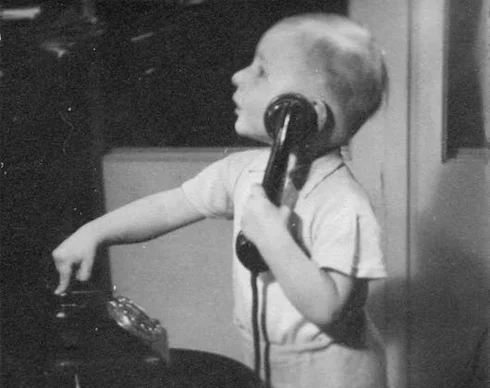
The single household telephone—typically mounted on the kitchen wall with its impossibly long, tangled cord—served as the family’s shared communication portal to the outside world. When it rang, whoever was closest would answer, often taking messages for other family members on a designated notepad kept nearby. This shared responsibility meant you regularly spoke with friends and relatives of other household members, creating connections between different social circles. CBS News explores the history of the telephone and ponders just where it might be going next.
Family phone conversations frequently happened in common areas, making them semi-public events where others might chime in with a hello or comment. The limited nature of phone time (especially with teenagers in the house) meant establishing family rules and courtesies around duration and timing of calls, teaching cooperation and consideration. Evening calls from distant relatives or friends became events where the receiver might be passed from person to person, creating a group conversation that included everyone rather than the private, individual communications we have today.
4. Writing and Receiving Personal Letters
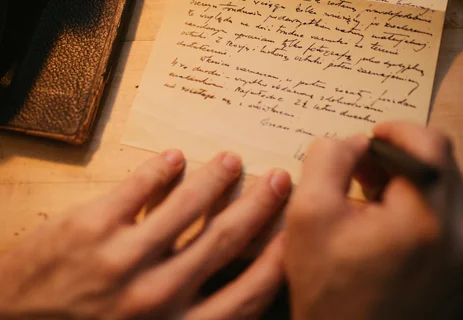
Long before email and instant messaging, maintaining relationships with distant friends and family required the thoughtful art of letter writing. Sitting down with stationery and a pen represented a significant investment of time and attention, with many people developing beautiful penmanship and personal writing styles that recipients came to recognize instantly. Letters arrived with distinctive handwriting on the envelope—a personal touch that created excitement and anticipation unlike the bills and junk mail that dominate today’s mailboxes.
Receiving a personal letter was an event worthy of announcement—”Mom got a letter from Aunt Carol!”—often read aloud to the whole family as a shared experience. Letters from loved ones were frequently saved in special boxes or drawers, taken out and re-read during quiet moments, preserving connections across time and distance in a tangible form. The anticipation of waiting for a reply created a pleasant tension and excitement rarely experienced in our age of instant communication, making the eventual arrival all the more satisfying.
5. Visiting the Record Store on Release Day
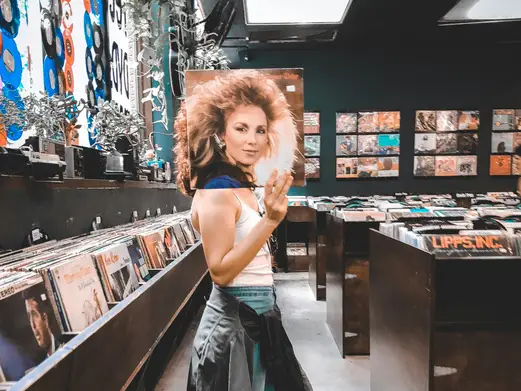
When favorite artists announced new albums, music lovers marked their calendars for the release date and planned special trips to the local record store. These cultural temples were community gathering spaces where music enthusiasts from different walks of life converged, united by their passion for discovering new sounds and artists. The physical experience of flipping through album covers, admiring the artwork, and reading liner notes created a sensory ritual that digital music can never replicate.
Record store employees often became trusted taste-makers who knew regular customers by name and could recommend new music based on previous purchases. Making a purchase was just the beginning of the experience—bringing the record home, carefully removing it from its sleeve, placing it on the turntable, and dropping the needle created a ceremonial approach to music appreciation. Friends would gather specifically to listen to new releases together, sitting in comfortable silence or engaging in passionate debates about lyrics and musical influences.
6. Sunday Drive Adventures

The tradition of piling the whole family into the car after Sunday lunch for a leisurely drive with no particular destination represented a uniquely ’70s form of togetherness. With gas prices still reasonable and fewer entertainment options competing for attention, these drives became weekly adventures where families might discover new neighborhoods, scenic overlooks, or interesting roadside attractions. The confined space of the family car created an environment where conversation naturally flowed, games were played, and singalongs spontaneously erupted.
Parents often used these drives to show children places from their own childhood or to scout new areas they might want to explore further. Stops for ice cream or at a roadside stand for fresh produce became anticipated highlights that everyone looked forward to each week. The Sunday drive represented one of the few activities where the journey truly was the destination, teaching children to appreciate simple pleasures and the joy of unhurried time together—a stark contrast to today’s overscheduled weekends filled with structured activities.
7. Weeknight Board Game Tournaments
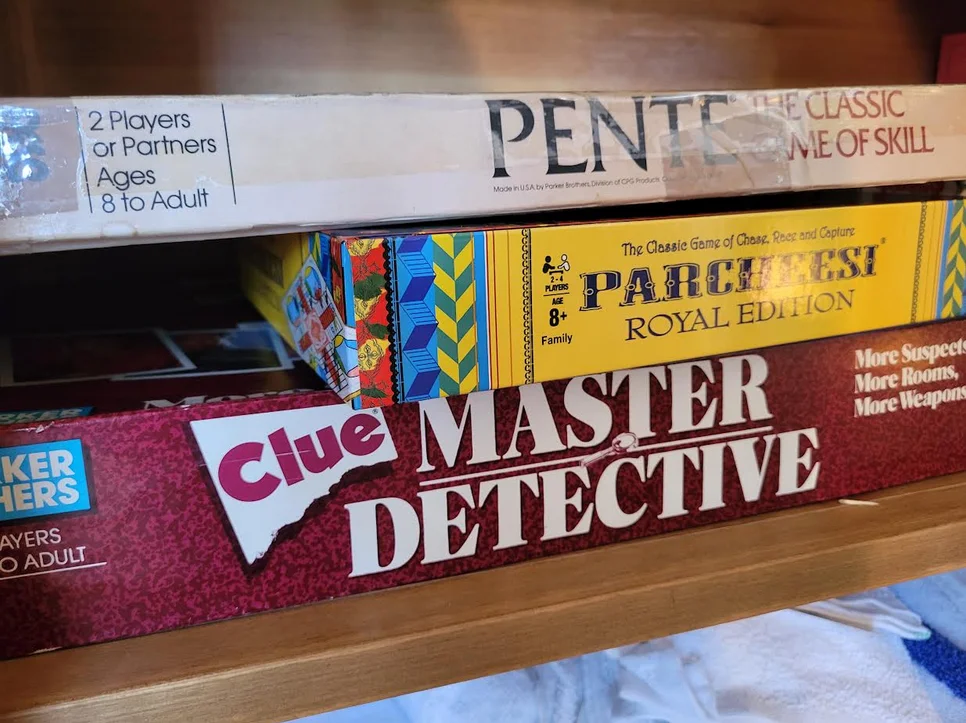
In an era before video games dominated home entertainment, many families designated specific weeknights for board game competitions that could become surprisingly intense. Games like Monopoly, Sorry!, or The Game of Life weren’t just pastimes—they were battlegrounds where family members revealed competitive streaks, strategic thinking, and even developed family-specific house rules that were passed down through generations. These games created natural opportunities for conversation, laughter, and the development of important social skills like taking turns and graceful winning (or losing).
The physical nature of these games—handling pieces, rolling dice, counting spaces—created a tactile shared experience that built fine motor skills and math abilities in younger players. Many families kept ongoing tournament records or championship titles that could be held for weeks until the next victor emerged, creating playful family narratives and inside jokes. Game nights often welcomed neighbors or visiting relatives, expanding the circle of connection and creating memories that participants still recall decades later with remarkable clarity and fondness.
8. Borrowing Ingredients from Neighbors

Before 24-hour supermarkets made midnight shopping runs possible, running out of an essential cooking ingredient meant knocking on a neighbor’s door to borrow a cup of sugar or a stick of butter. This practical necessity created regular, brief interactions between neighbors that built familiarity and trust through repeated small acts of mutual assistance. The unspoken understanding was that these small favors would be reciprocated, creating a neighborhood support network built on everyday kindnesses.
The simple act of returning a borrowed item often expanded into longer conversations over coffee or an invitation to sample the dish that required the borrowed ingredient. Many neighborhoods established informal lending systems that extended beyond food to tools, serving dishes for special occasions, or extra folding chairs for gatherings. These exchanges created a community awareness of who was cooking what, celebrating which occasions, or struggling with what challenges—building community knowledge that allowed people to support each other through life’s ups and downs in organic, non-intrusive ways.
9. Coffee Klatches and Kitchen Table Gatherings
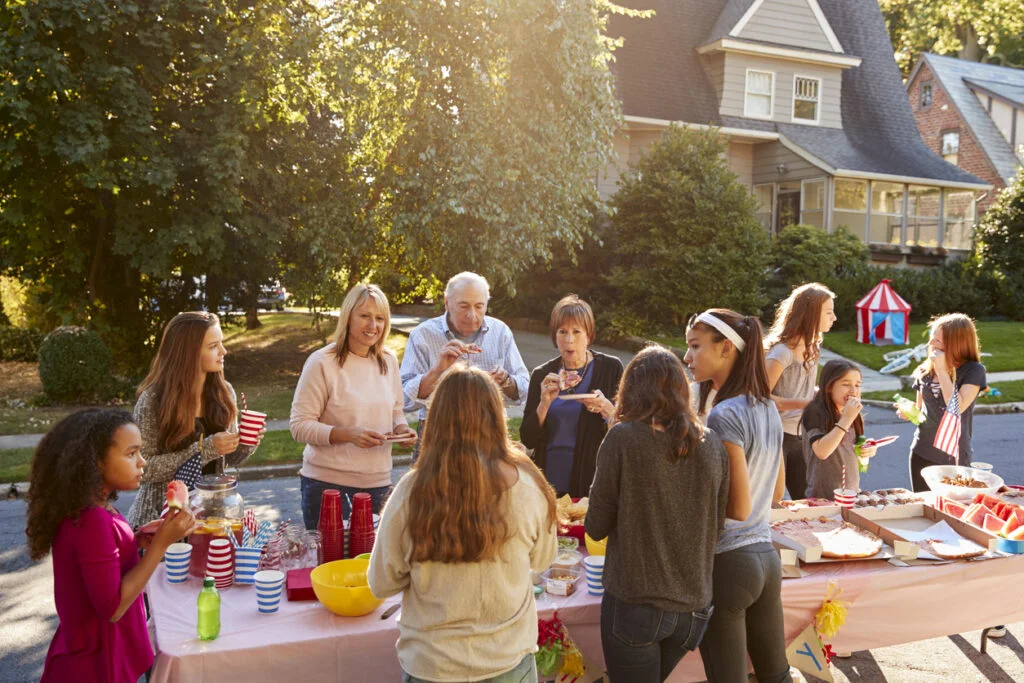
The informal daytime gatherings of neighbors—primarily women—around kitchen tables for coffee and conversation represented a vital social institution of ’70s neighborhood life. These impromptu meetings provided emotional support, practical advice, and important community news long before Facebook groups or neighborhood apps. The regular rhythm of these gatherings—often happening after morning chores were completed or while watching children—created a reliable social touchpoint in many women’s lives.
Coffee klatches operated as neighborhood information exchanges where participants learned about everything from sales at local stores to which families needed support during illness or hardship. The multigenerational nature of these gatherings meant younger women received wisdom from experienced neighbors about child-rearing, marriage, and household management in a natural mentoring environment. Many lasting friendships formed around these kitchen tables, creating support networks that endured for decades and helped sustain communities through changing times.
10. After-Dinner Neighborhood Walks
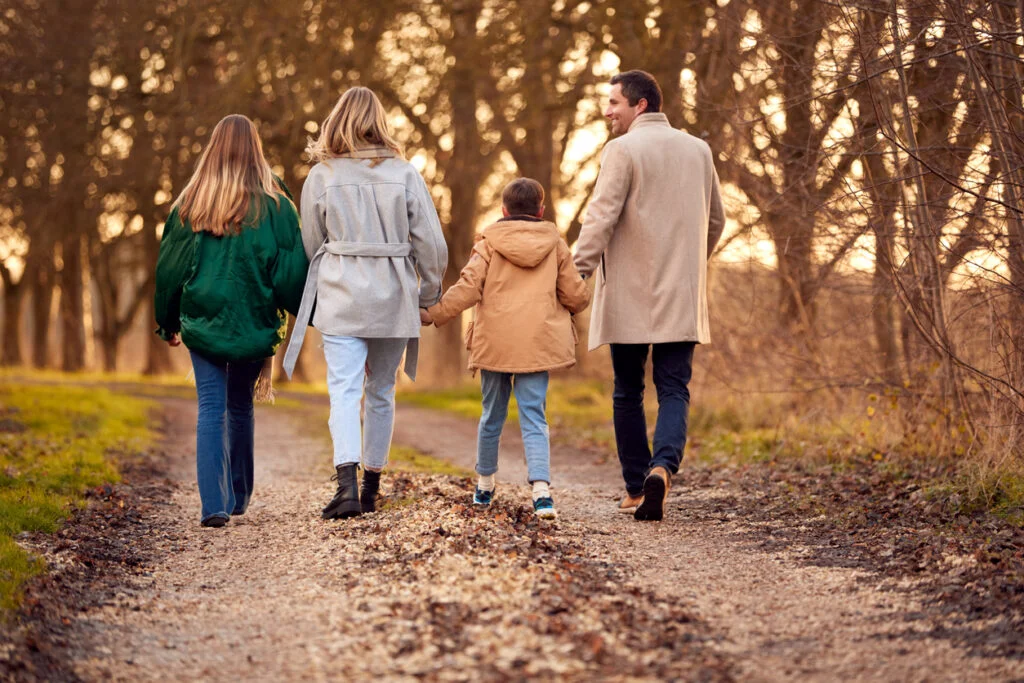
As dinner dishes were cleared away and evening approached, families across America would often step outside for a stroll around the neighborhood. These walks served multiple purposes—aiding digestion, getting children’s energy out before bedtime, and most importantly, connecting with neighbors who were similarly enjoying the evening air. A simple “hello” might expand into conversations spanning several blocks as neighbors joined each other or paused to chat from front porches and yards.
The predictable timing of these walks meant regular encounters with the same neighbors, building relationships through brief but frequent interactions. Children would spot friends and dart off to play while adults caught up on neighborhood news and checked in on elderly residents. These walks created a natural neighborhood surveillance system where residents became familiar with what was normal on their streets and could quickly notice anything unusual, increasing both actual safety and everyone’s sense of security in a way that neighborhood watch programs later tried to formalize.
11. Handwritten Recipe Exchanges

Before Pinterest and online recipe databases, discovering new dishes happened through personal exchanges of handwritten recipe cards passed between friends, coworkers, and family members. Requesting a recipe after enjoying a dish at someone’s home was both a genuine compliment to the cook and an acknowledgment of the community value of sharing culinary knowledge. Many women (and some men) took pride in their distinctive handwriting and personalized recipe cards, sometimes adding notes about adaptations or special occasions when the dish was particularly appropriate.
These recipe collections became treasured family heirlooms, with the handwriting of departed loved ones preserving their memory through the foods they shared. Special dishes often became associated with the person who introduced them to the group—”Dorothy’s Famous Potato Salad” or “Uncle Rick’s Barbecue Sauce”—creating edible monuments to friendships and family connections. Recipe exchanges frequently led to cooking sessions where techniques were demonstrated in person, creating mentoring relationships and opportunities for deeper conversation while working side by side in the kitchen.
12. Impromptu Front Porch Gatherings
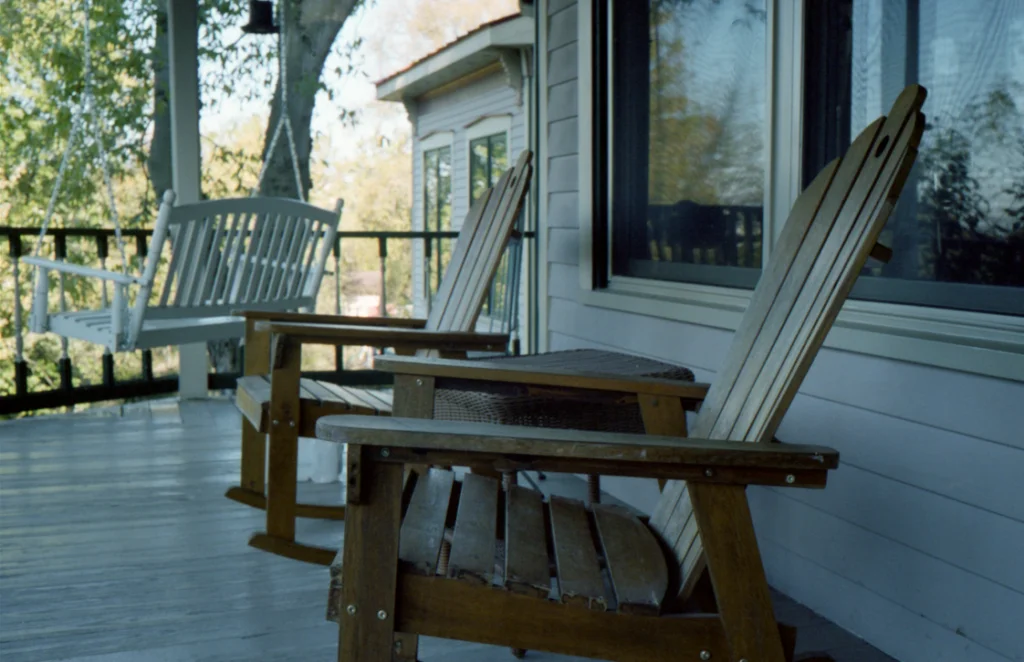
The architectural feature of the front porch—still common in many neighborhoods during the ’70s—created natural gathering spaces where public and private life seamlessly blended. Simply sitting on the porch on a pleasant evening was an open invitation for neighbors to stop and chat while passing by or even join you for a spell. These organic gatherings required no planning, phones calls, or formal invitations—they happened naturally through proximity and visibility.
Children playing in front yards would naturally gravitate toward porches where adults were gathered, creating multi-generational interaction spaces where youngsters absorbed social skills by listening to adult conversations. The public nature of these gatherings meant they were naturally inclusive—newcomers to the neighborhood could easily join without formal invitation, and regular participants quickly noticed if an elderly neighbor hadn’t appeared for several days. Front porch culture created a middle space between the privacy of home life and the anonymity of public spaces that has largely disappeared from contemporary American life.
The rituals that brought us together in the 1970s remind us that human connection often flourishes best in simple, repeated interactions rather than grand gestures. As we’ve gained technological convenience, many of us have lost these daily touchpoints of community that once stitched our social fabric together so tightly. Perhaps by remembering these forgotten rituals, we might be inspired to create new ones that preserve what mattered most about them—the regular, reliable ways they brought us face to face with the people who shared our physical world.


